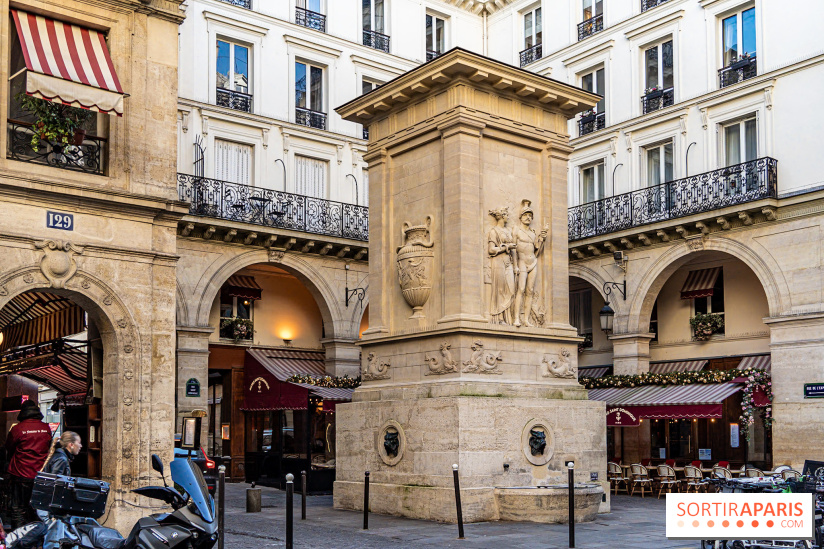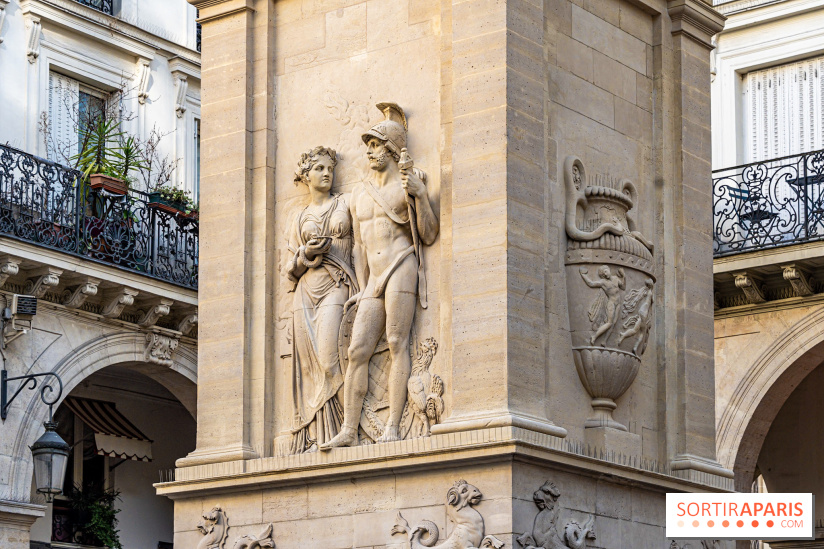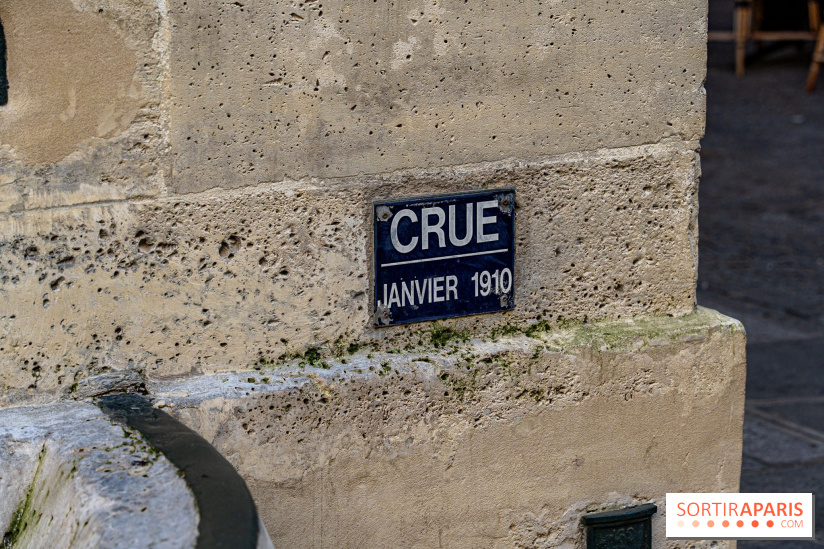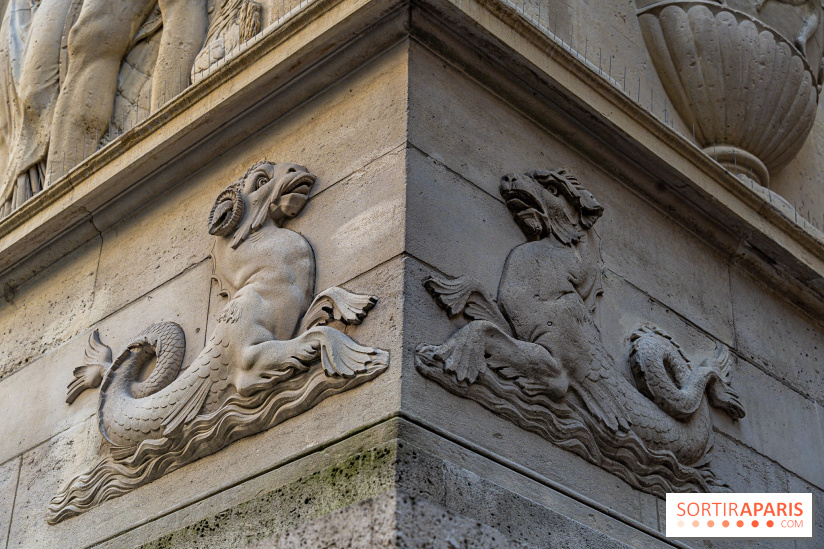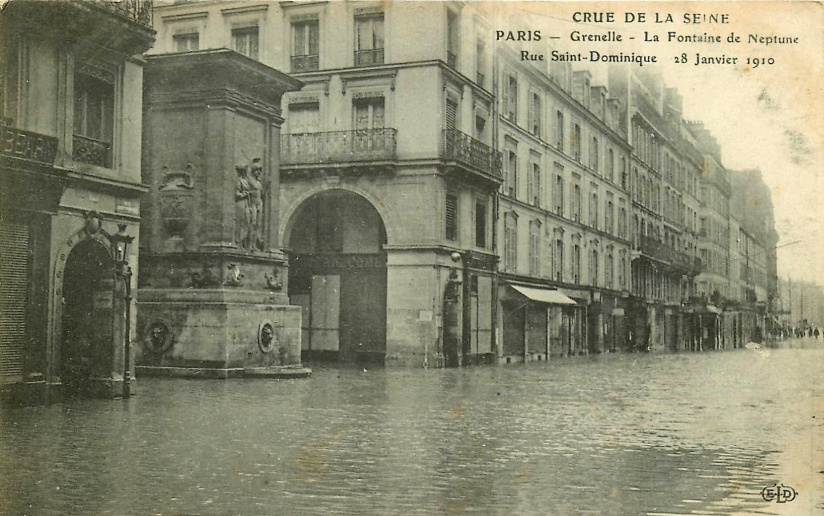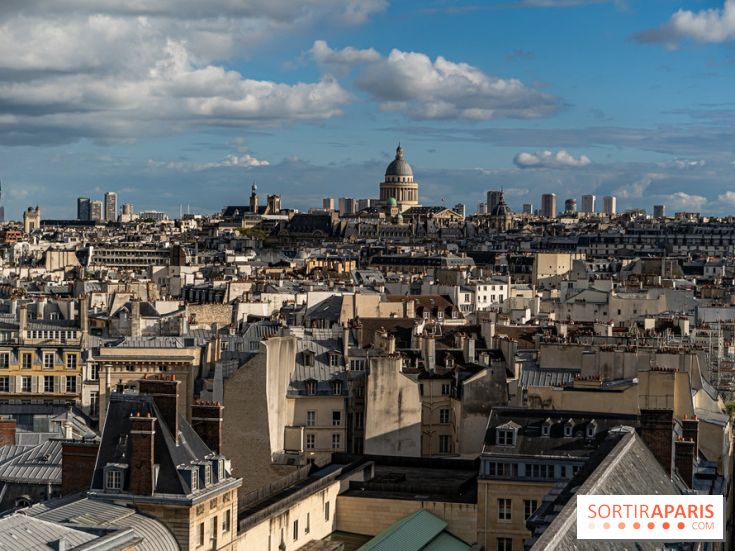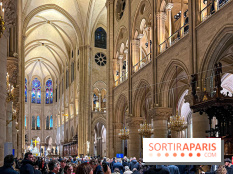The Fontaine de Mars, located at 129 rue Saint-Dominique, is an emblematic monument in the 7th arrondissement of Paris. Designed by engineer and architect François-Jean Bralle, and decorated by artist Pierre-Nicolas Beauvallet, this fountain reflects the neoclassical style of the Napoleonic era. Erected between 1806 and 1809, it was originally surrounded by a hemicycle of poplars, replaced in 1859 by a small arcaded square.
The Fontaine de Mars faces the Rue de l'Exposition, named in honor of the 1867 Universal Exhibition. At that time, a low-pressure water distribution network from the Ourcq supplied Paris, thanks in particular to the Gros-Caillou fire pump, commissioned in 1788. This pump, however, was abandoned in 1858 due to the poor quality of the water it distributed.
The Fontaine de Mars is distinguished by its square, blond stone structure, adorned with pilasters and a Doric entablature. Its four sides, framed by Doric-style molded columns, feature remarkable bas-reliefs. The main panel depicts Hygie, goddess of health, and Mars, god of war, a strong symbology evoking power and protection.
But it's not just its architecture that makes the Fontaine de Mars a site of historical interest. A discreet but significant detail testifies to its resilience in the face of nature's vagaries: a flood marker. This marks the level reached by the Seine during the famous flood of 1910, a historic event that saw the waters flood the streets of Paris. Located some 570 metres from the riverbed, the fountain survived this dramatic episode, becoming a silent witness to the city's history.
The Fontaine de Mars, formerly known as the Fountain of the Gros-Caillou, is also famous for its frieze of mythological marine animals and its bronze masks, identical to those on the Fountain of the Four Seasons in the Rue de Grenelle. Water gushes from the mascarons into small semicircular basins at ground level, creating a soothing visual spectacle.
Listed as a Monument Historique since 1926, the Fontaine de Mars is not only an architectural treasure, but also a symbol of Paris's resilience in the face of hardship. It remains a must-see for lovers of history and architecture, as well as for those seeking to understand the tumultuous past of the French capital.
As you stroll through the 7th arrondissement, take a moment to admire the Fontaine de Mars. Imagine the waters of the Seine slowly rising to reach this historic point in 1910, an eloquent reminder of the power of nature and Paris's ability to persevere through the centuries.
Location
Fontaine de Mars - Gros-Caillou fountain
129 Rue Saint-Dominique
75007 Paris 7
